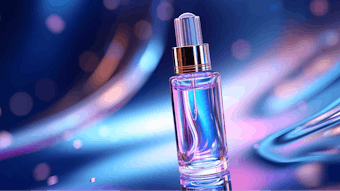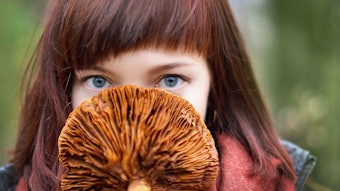Appearance is an important part of being accepted in society, and social rituals are based on a need to be attractive to others.1 The link between looks and character is strongly imprinted in the developed world, as is the reverse.2 Part of the developmental trajectory of life presumes the adjustment to physical aging, but such an adjustment is complicated for women who hold appearance central to their social value. Some women show a decline in caring for their body with age.3 When the toll of aging is accepted with resignation,4 the mirror reinforces negative stereotypes that impact self-esteem.5 Effort to improve one’s appearance through the application of skin care heightens a sense of well-being to induce the “look good, feel good” factor.6
Consumers, however, often do not feel confident about how to apply skin care, suggesting that the application instructions are inadequate. This creates an opportunity for skin care manufacturers to provide application instructions for better product efficacy. A consumer’s application technique contributes to the product’s efficacy in addition to dictating consumer satisfaction on the product’s feel.
Clinical Benefits of Facial Massage
Skin care is usually applied with gentle massage using the finger tips. In fact, touch, a human need vital for emotional and physical health, is often referred to as the “mother of all senses,” as the tactile system is the first sensory system to develop in the embryo.7 The mode of skin care application follows the product purpose. For example, exfoliation and facial cleansing require more friction and smaller circular strokes that differ from the patting movements for eye care application. Even a short facial massage has a physiological benefit. On the epidermal level, light massage may encourage corneocyte shedding, increase epidermal proliferation and potentially increase thickness. Dermal tissue also benefits from increased blood flow and tensional forces in the dermis induced by deeper mechanical stimulation, where dermal fibroblasts change phenotype and produce more collagen.8 Superficial massage allows for the removal of interstitial fluid or lymphatic drainage. It has been proposed that repeated massage may have some cumulative effect with time.9
Furthermore, there is a strong relationship between the skin and the brain; they have the same ectodermal origin and are affected by the same hormones and neurotransmitters.10 The skin is also linked to the brain by its primary function in tactile receptivity.11 Professional facial massage leads to relaxation, in turn reducing anxiety12 and insomnia.13 Short self-massage as a part of a daily skin care application is health-affirming with benefits for skin physiology and a calming influence on the psyche. Research suggests that momentary positive emotions are important. Further, people become more satisfied not simply because they feel better but because they develop resources for living well.14
Providing Application Instructions
Skin care application should become a pleasant part of daily life to be considered one of the resources for living well. Some skin care brands such as Olay, SK-II, Shiseido and Clarins15–18 already include massage charts in their product information. Some have enlisted the help of a celebrity therapist, but it is important to ensure that these massage routines are evidence-based.
One recent study conducted an evaluation of effleurage on moisturizer efficacy.19 Female volunteers massaged one forearm for one minute twice a day with superficial effleurage movements for two weeks, followed by a week of regression. Although the moisturizer application improved skin hydration, elasticity and barrier function, the adjunct massage intervention did not enhance the moisturizer efficacy. Even though the forearm has been proven to be representative of the face for some noninvasive measurements,20 the facial structure of bones, muscles and varied skin barrier integrity and sensitivity in the distinct facial areas are different. Also, the type and intensity of the massage movement as well as the length of the massage intervention have to be taken into consideration when designing new massage protocols to benefit moisturizer application. Skin care manufacturers should incorporate evidence-based massage into application instructions. However, before providing these massage instructions, those companies should conduct studies to substantiate the anti-aging or at least enhanced moisturizing benefits of this application technique for the face, avoiding testing on the forearm.
References
- SC Kellett and DJ Gawkrodger, The psychological and emotional impact of acne and the effect of treatment with isotretinoin, Brit J Dermatol 140 273–282 (1999)
- L Papadopoulos, C Walker, D Aitken and R Bor, The relationship between body location and psychological morbidity in individuals with acne vulgaris, Psychology, Health & Medicine 5(4) 431–438 (2000)
- SJ Eriksen, To cut or not to cut: cosmetic surgery usage and women’s age-related experiences, Int J Aging Hum Dev 74(1) 1–24 (2012)
- PB Baltes and MM Baltes, Psychological perspectives on successful aging: The model of successful optimization and compensation, Ch 1 in Successful Aging, PB Baltes and MM Baltes, eds, Cambridge University Press, Cambridge, Mass., USA (1990) pp 1–34
- CS Koblenzer and P Bostron, Chronic cutaneous dysesthesia syndrome, J Am Acad Dermatol 30 370–374 (1994)
- CK Ong and T Ryan, Healthy Skin for All: A Multi-faceted Approach, International League of Dermatological Societies: Oxford, U.K. (1998)
- A Montagu, Touching: The Human Significance of the Skin, Columbia University Press, New York, USA (1971)
- B Eckes and T Krieg, Regulation of connective tissue homeostasis in the skin by mechanical forces, Clin Exp Rheumatol 22(3 Suppl 33) S73–76 (2004)
- AV Rawlings, Cellulite and its treatment, Int J Cosmet Sci 28(3) 175–190 (2006)
- CS Koblenzer, Psychosomatic concepts in dermatology, A dermatologist-psychoanalyst’s viewpoint Arch Dermatol 119(6) 501–512 (1983)
- AN Domonkos and GC Andrews, Pruritus cutaneous neuroses and neurocutaneous dermatoses, in Andrew’s Diseases of the Skin, 6th ed, Saunders: Philadelphia, USA (1971) pp 61–76
- Y Yamada, T Hatayama, T Hirata, K Maruyama, T Ave and YA Suzuki, Psychological effect of facial estherapy, Tohoku Psychol Folia 45(1–4) 6–16 (1986)
- G De Domenico and EC Wood, Beard’s Massage, Saunders: Philadelphia, USA (1997)
- MA Cohn, BL Fredrickson, SL Brown, JA Mikels and AM Conway, Happiness unpacked: Positive emotions increase life satisfaction by building resilience, Emotion 9(3) 361–368 (2009)
- Microsculpting Cream Pamphlet, Olay, www.olay.com/en-US/Images/regenerist/Microsculpting%20Cream%20pamphlet.pdf (Accessed Oct 10, 2012)
- How to use SK-II Stempower, SK-II Malaysia, www.facebook.com/skii.malaysia (Sept 19, 2012) (Accessed Oct 10, 2012)
- Facial Massage, Shiseido, www.sca.shiseido.com/skinMassageDetail.cfm (Accessed Oct 10, 2012)
- Application Methods, Clarins, www.clarins.co.uk/on/demandware.store/Sites-clruk-Site/en_GB/Clarins-WhyClarins?cid=why_clarins-expertise_ advice-application_methods (Accessed Oct 10, 2012)
- SH Hamed, I Assakir, AM Almalty and SJ Bweir, Does massage postapplication improve moisturizer’s efficacy? A 2-week regression study, Cosmet Dermatol Sep 11(3) 239–244 (2012)
- R Bazin and C Fanchon, Equivalence of face and volar forearm for the testing of moisturizing and firming effect of cosmetics in hydration and biomechanical studies, Int J Cosmet Sci Dec 28(6) 453–460 (2006)










